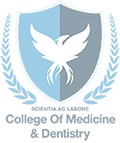The aim of this course is to provide education in pharmacovigilance and drug safety and includes the history and their regulations and guidelines, the key components of the adverse event reporting in the clinical and postmarketing setting, reference safety information documentation, aggregated safety reports and an overview of signal detection and risk management processes.
The key learning objectives are:
- Drug safety/pharmacovigilance (PV) regulations and practice, and sources of regulatory guidance
- Pharmacovigilance processes in the premarketing and postmarketing settings
- Adverse drug reactions, and process of individual case safety reporting (ICSR), including medical review, case narrative writing, causality assessment and expedited reporting
- Concept of reference safety information documents and its relevance
- Aggregated safety reports in the premarketing setting (Development Safety Update Reports- DSUR) and postmarketing setting (Periodic Benefit Risk Evaluation-PBREs).
- Signal detection processes including signal validation, prioritisation, evaluation, and recommendations
- Significance of risk management plan, presentation of the report template and its completion
Format:
The course is delivered in 12 weeks over a period of 3 months.
The course is a blended programme of study using a combination of teaching methods which includes:
Webinars (30 hours)
E-learning (12 hours)
Self-directed learning and reflective practice (268 hours)
The hours are an estimate of the time distribution and may vary in between weeks.
Content:
Week 1: Introduction of Pharmacovigilance
Aims:
The aims of this Week are to:
- Explain the concept of pharmacovigilance (PV), the rationale for modern drug safety/pharmacovigilance (PV) regulation and practice
- Describe the international policy-making bodies and sources of regulatory guidance
Learning Outcomes:
At the end of the participants will be able to:
- Understand the concept of pharmacovigilance and drug safety, scope and history
- Become familiar with the regulatory guidelines and laws that govern pharmacovigilance
Week 2: Drug Development Process
Aims:
The aims of this Week are to:
- Provide an overview of the drug development process from preclinical drug trials to human clinical trials and the role of pharmacovigilance in the different stages
Learning Outcomes:
At the end of the Week the participants will be able to:
- Become familiar with all stages of the drug development process from preclinical to clinical phases and the role of pharmacovigilance in the different stages
Week 3 The Principles of Pharmacovigilance
Aims:
The aims of this Week are to:
- Describe all pharmacovigilance processes in premarketing and postmarketing setting, and areas of the pharmaceutical enterprise in which PV makes significant contributions
Learning Outcomes
At the end of the Week the participants will be able to:
- Understand the pharmacovigilance function in the premarketing and post marketing settings and their differences
Week 4: Case Processing
Aims
The aims of this Week are to:
- Describe the process of a single case, MedDRA coding of adverse events, and case narrative writing (single case and group narrative)
Learning Outcomes
At the end of the Week the participant will be able to:
- Describe and understand the process of a single case report and how adverse events are coded
- Understand the importance of a case narrative and their challenges
Week 5: Reference Safety Information (RSI)
Aims
The aims of this Week are to:
- Describe the reference safety information documents including the IB (Investigator Brochure) and the CDS (Core Data Sheet) and local labels.
- Explain how expectedness is being assessed
- Illustrate the importance of the RSI
Learning Outcomes
At the end of the Week the participant will be able to:
- Become familiar with the concept of safety reference information, understand the different document types and when to make use of them
- Understand the importance of the RSI in the pharmacovigilance context
Week 6: Adverse Drug Reactions
Aims
The aims of this Week are to:
- Define adverse drug reactions and individual case safety report, medical review, causality assessment and expedited reporting
- Explain the difference between adverse drug event v adverse drug reaction
Learning Outcomes
At the end of the Week the participant will be able to:
- Understand the concept of drug adverse reaction and apply rules to safety reporting (single case reports) based on theory and practical examples
- Understand the difference between adverse drug event v adverse drug reaction
Week 7: Aggregated Safety Reports I
Aims
The aims of this Week are to:
- Provide an overview of the Developmental Safety Update Report (DSUR), aim and objectives, presentation of the report template and their completion
Learning Outcomes
At the end of the Week the participant will be able to:
- Understand and become familiar with the concept of DSUR (aggregated safety report), its purpose and content
Week 8: Aggregated Safety Reports II
Aims
The aims of this Week are to:
- Provide an overview of the Periodic Benefit-Risk Evaluation Report (PBRER), aim and objectives, presentation of the report template and their completion
Learning Outcomes
At the end of the Week the participant will be able to:
- Understand and become familiar with the concept of PBRE (aggregated safety reports), its purpose and content
Week 9: Signal Management Process I
Aims
The aims of this Week are to:
- Provide an overview of all activities related to the signal detection activity, including signal validation, prioritisation, evaluation, and recommendations
- Tracking and documentation of signal detection activities.
Learning Outcomes
At the end of the Week the participant will be able to:
- Describe all signal detection activities from identification of a signal to evaluation and final recommendations
- Determine whether a signal represents a risk which may warrant further assessment, communication, or other risk minimization actions in accordance with the medical importance of the issues
Week 10: Signal Management Process II
Aims
The aims of this Week are to:
- Discuss practical examples of signal management.
- Document a signal investigation as a drug safety report
Learning Outcomes
At the end of the Week the participant will be able to:
- Understand the signal detection process from a practical example, and the concept of drug safety report as a documentation tool
Week 11: Risk Management Plan (RMP)
Aims
The aims of this Week are to:
- Provide an overview of the risk management plan aims and goals, presentation of the report template and its completion.
- Provide an understanding on how important risks of therapeutic drugs are to be minimized and/or further characterized
Learning Outcomes
At the end of the Week the participant will be able to:
- Understand and become familiar with the concept of risk management plan, how to produce and update one, and which planning steps should be taken and why
Week 12: The Big Picture
Aims and Learning Outcomes
- Review key points of pharmacovigilance, and conclusion.
Quiz and feedback
All live webinars will be recorded and can be viewed again at any time and as often as you like. So if you have missed one of the webinars it is no problem. If you have any questions you can contact the speaker or simply ask your questions in the next live webinar.
Your benefits of the live webinars
✔ Flexible
✔ Location independent
✔ Participate live or watch the webinar later at your own leisure
✔ Ask your questions directly to the speaker
✔ Discussion with other participants
| Week | Topic | Title | Duration (hours) | Date | Time (UK time) |
1 | Introduction of Pharmacovigilance | Overview of Pharmacovigilance | 1,5 | TBA | TBA |
1 | Introduction of Pharmacovigilance | Standard Terms And Terminology | Regulatory Guidelines and Laws | 1,5 | TBA | TBA |
2 | Drug Development Process | Preclinical Phases | 1 | TBA | TBA |
2 | Drug Development Process | Clinical Trial Phases | 1 | TBA | TBA |
3 | The Principles of Pharmacovigilance | Premarketing Pharmacovigilance | 1 | TBA | TBA |
3 | The Principles of Pharmacovigilance | Postmarketing Pharmacovigilance | 1 | TBA | TBA |
4 | Case Processing | Single Case Processing | 1,5 | TBA | TBA |
4 | Case Processing | MedDRA Dictionary and Coding of
Adverse Events | 1,5 | TBA | TBA |
5 | Reference Safety Information (RSI) | Investigator Brochure (IB) /Developmental Core Safety Information (DCSI) | 1,5 | TBA | TBA |
5 | Reference Safety Information (RSI) | Core Data Sheet (CDS/local labels) | 1,5 | TBA | TBA |
6 | Adverse Drug Reactions | Individual Case Safety Report (ICSR) | 1.5 | TBA | TBA |
6 | Adverse Drug Reactions | Case Assessment-Medical review of Cases / Causality assessment / Expedited | 1.5 | TBA | TBA |
7 | Aggregated Safety Reports | DSUR - General Introduction | 1 | TBA | TBA |
7 | Aggregated Safety Reports | DSUR- Template Report and their Completion | 1 | TBA | TBA |
8 | Aggregated Safety Reports | PSUR/PBRER - General Introduction | 1 | TBA | TBA |
8 | Aggregated Safety Reports | PSUR/PBRER - Template Report and their Completion | 1 | TBA | TBA |
9 | Signal Management Process | Concept, Input, Periodicity and
Materials, Signal Validation | 1 | TBA | TBA |
9 | Signal Management Process | Signal Evaluation, Evaluation of Risk and Recommendations, Process in drug safety report | 1,5 | TBA | TBA |
10 | Risk Management Plan (RMPs) | General Introduction | 1 | TBA | TBA |
10 | Risk Management Plan (RMPs) | Template Report and Their Completion | 1 | TBA | TBA |
11 | Pharmacovigilance System Master File (PSMF) | General Introduction | 1 | TBA | TBA |
11 | Pharmacovigilance System Master File (PSMF) | Practical example | 1 | TBA | TBA |
12 | The Big Picture | How It All Fits Together | 1,5 | TBA | TBA |
12 | The Big Picture | Take Home Points and Quiz. | 1 | TBA | TBA |
As of January 2024, subject to change
 Established in 2018, we are one of the few private education providers offering a wide range of training programmes for the dental team and all healthcare professionals. Working across a blended learning concept, we aim to reach out to all aspiring individuals to improve their knowledge and skills. Our collaboration with Ulster University enables us to offer a wide range of career progression opportunities.
Established in 2018, we are one of the few private education providers offering a wide range of training programmes for the dental team and all healthcare professionals. Working across a blended learning concept, we aim to reach out to all aspiring individuals to improve their knowledge and skills. Our collaboration with Ulster University enables us to offer a wide range of career progression opportunities.





